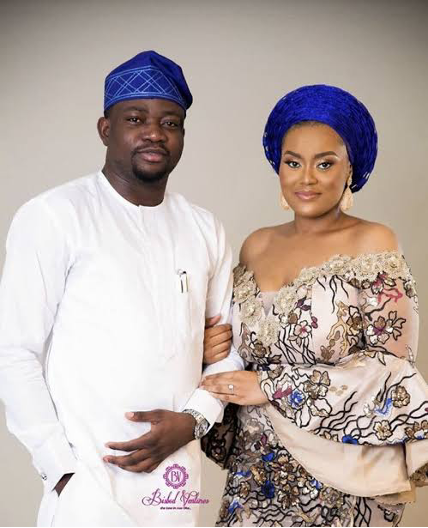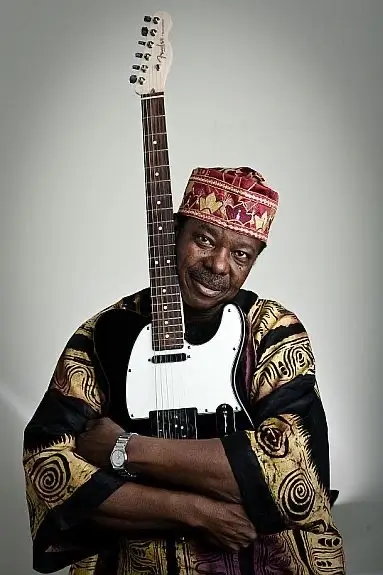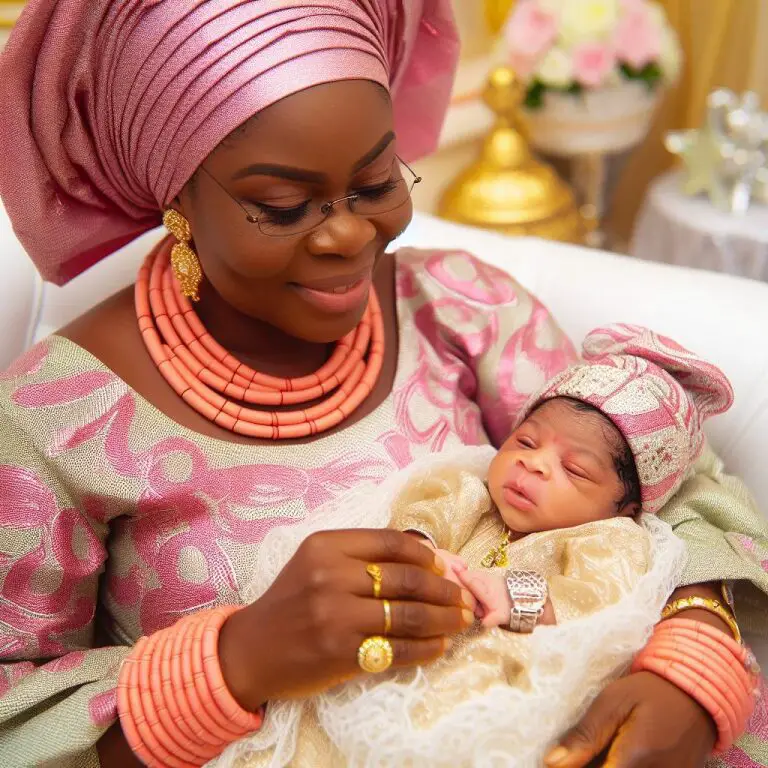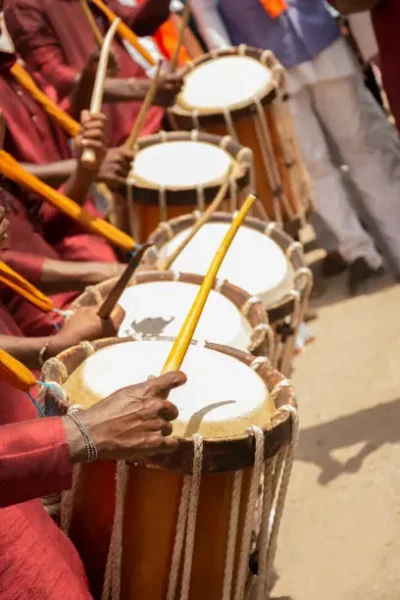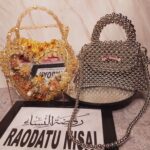DiscoverYoruba.com is your one-stop for embracing Yoruba culture, entertainment, and history unfolding.
Have you ever wondered why Yorùbá speakers from different regions sometimes sound so different from each other? Let’s explore the fascinating world of Yorùbá dialects and understand how this rich language varies across West Africa!
What is Yorùbá and Where is it Spoken?

Brief History
Yoruba is a Niger-Congo language spoken primarily in Southwestern and Central Nigeria, located in West Africa. It is spoken by the Yoruba people. Yoruba is classified among the Edekiri languages, which is together with the Itsekiri (spoken in Niger Delta) and Igala (spoken in Central Nigeria) from the Yoruboid group of languages within the Volta-Niger branch of the Niger-Congo family. The linguistic unity of the Niger-Congo family dates to 6,000-8,000 years ago.
As a Pluricentric language (pluricentric means having multiple standard forms or varieties of a language that are often used in different countries), it is primarily spoken in a dialectal area spanning Nigeria, Benin, and Togo with smaller migrated communities in Côte d’Ivoire, Sierra Leone and The Gambia.
The Yorùbá language is among the most widely spoken languages in Africa. It is the main language of the Yorùbá people, who live in Southwestern Nigeria and other parts of West Africa. Yorùbá is spoken by approximately 37 million native speakers (UNESCO Language Atlas, 2023) in Southwestern Nigeria, parts of Benin and Togo and approximately 45-50 million speakers worldwide (Ethnologue, 2024). There is a considerable amount of literature available in the Yoruba language, including books, journals, flyers, and newspapers. To read more about what it means to be Yoruba, check here.
Yoruba is also used in radio and Television broadcasting and is taught at all educational levels, from primary to secondary and tertiary institutions. But did you know that Yorùbá is not spoken the same way everywhere? There are many dialects of Yorùbá, and each one has its own unique features.
- Southwestern and Central Nigeria
- Parts of Benin Republic
- Regions of Togo
- Communities in Côte d’Ivoire, Sierra Leone, and The Gambia
- Diaspora communities in Cuba, Brazil, and other parts of the Americas
In Nigeria, Yorùbá is the primary language in six states:
- Ekiti
- Lagos
- Ogun
- Ondo
- Osun
- Ọ̀yọ́

Understanding Yorùbá Dialects
A dialect is a way of speaking a language that is unique to a specific group of people or region. Yorùbá has many dialects because the Yorùbá people live in different parts of Nigeria and beyond. These dialects are slightly different in pronunciation, vocabulary, and even grammar, but they are still part of the same Yorùbá language family.
Think of dialects as different flavors of the same language. While speakers of different dialects can usually understand each other, each region has its own unique way of pronouncing words, special vocabulary, and sometimes even different grammar patterns.
The Five Major Dialect Regions
The Yorùbá language features numerous dialects grouped into five main areas: Northwest, Northeast, Central, Southwest, and Southeast. Although clear boundaries are difficult to establish, dialects on the peripheries often share similarities with neighbouring dialects.
1. North-West Yorùbá Region:
The Northwest Yoruba dialect region includes but is not limited to Ibadan, Ẹgbá, Ọ̀yọ́, Lagos (Eko), Ogun, Owu, Onko, and Ibarapa dialects.
2. North-East Yorùbá Region:
The Northeast Yoruba dialect region includes the Okun people, who primarily reside in Kogi State, Nigeria. However, they also have settlements in Kwara, Ekiti, and Ondo states. It includes but is not limited to Aworo/Oworo dialect, Yagba dialect, Ijumu dialect, Ibunu/Abunu dialect (found in the town of Kabba), Ikiri, Gbede and Owe dialects.
3. Central Yorùbá Region:
The Central Yorùbá dialect region includes but is not limited to Ife, Ijesha, Igbomina, Ekiti (including Akurẹ), Ẹfọn, Western Akoko dialects. Speakers of this dialect stand out by changing the “i” in words to “u.” For example, “isu”, meaning yam, becomes “usu.”
4. South-West Yorùbá Region:
The South-West Yorùbá dialect region includes but is not limited to Ketu, Awori, Sakété, Ifè (Togo), Idasha, and Ipokia/Anagbo dialects.
5. South-East Yorùbá Region:
The South-East Yorùbá dialect region includes but is not limited to Ondo, Ọwọ, Remo, Ìjẹ̀bú, Ikale, Eastern Akoko (Akoko, Ào), Ilaje, and Usẹn dialects.
Other places where Yorùbá is spoken
The Yoruba language is also spoken in neighbouring countries like the Benin Republic, parts of Togo, Sierra Leone, Cuba, and Brazil. The Yorùbá language also has dialects spoken outside of Nigeria for example,
Benin: Dialects include Ketu, Ije, Ajase, Idaitsa, Nago and Tsabe
Togo: Dialects include Ana and Itsa
Brazil: Dialects include Nago
Cuba: Dialects include Lukumi.
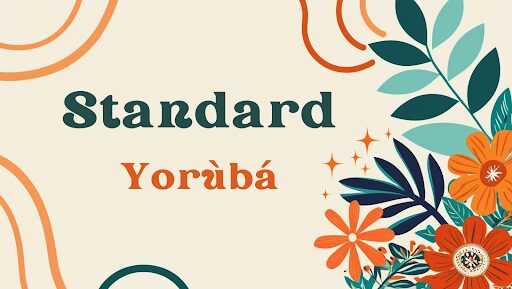
Standard Yorùbá: The Bridge Between Dialects
The Yorùbá language is a tonal language, meaning it uses different pitch patterns to distinguish words and grammatical forms. It has three tone levels (Àmì ohùn): high, medium, and low (Àmì ohùn Oke, Àmì ohùn Aarin ati Àmì ohùn Isale).
Standard Yorùbá is widely recognized among native Yorùbá speakers in all Nigerian states where the language is spoken, alongside various Yorùbá dialects.
Standard Yoruba is the literary form of the language that is based on the Ọ̀yọ́ and Lagos dialects, which are closely related. It includes features from other dialects but also has some features peculiar to itself. It has been a decisive consolidating factor in the emergence of a common Yoruba identity.
It is known as literary Yoruba. It is learned in schools and is used in politics, education, entertainment, and media – on radio and television.
Standard Yorùbá is like the “official” version of the language also known as Yorùbá Ajumọ́lo.
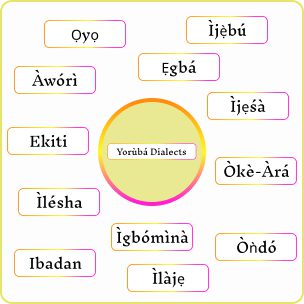
Examples of Yorùbá dialects
The Yorùbá language has many dialects including but not limited to Ìjẹśà, Ẹgbá, Ibadan, Awori, Ọ̀yọ́, Ìjẹ̀bú, Ìlàjẹ, Ilesha, Oya, Owo, Ikale, Ikare, Ondo, Yagba, Gbede, Ijumu, Ife, Ikiri, Ìgbómìnà, Isabe, Ijo, Irun, Ekiti and many more.
Here are some Yorùbá dialects, where they are spoken, and examples of their unique expressions and meanings:

1. Ìjẹśà Dialect
Spoken by the Ìjẹśà people in Osun State.
Features unique words and expressions that are different from standard Yorùbá.
Example 1: Ìjẹśà lá gbọ́gbá
Meaning: “Ìjẹśà is the place of plenty”.
Example 2: Ó dà lówó mi
Meaning: “It’s my turn” or “I have control now”.

2. Ẹgbá Dialect
Spoken by the Ẹgbá people in Abeokuta and surrounding areas in Ogun State.
Features a mix of Yorùbá and some influences from neighbouring languages.
Example 1: Ẹgbá a gbe dé
Meaning: “Ẹgbá thrives here”.
Example 2: Ẹ máa jàǹbá
Meaning: “Stay safe” or “Be careful”.

3. Ìbàdàn Dialect
Spoken in Ìbàdàn and surrounding areas in Ọ̀yọ́ State.
Features a mix of Yorùbá and some influences from neighbouring languages.
Example 1: Ìbàdàn mésí kọ̀gọ̀.
Meaning: “Ibadan knows how to reply to words”. “Ibadan never backs down”.
Example 2: N kò ní gbẹ́sẹ̀ nílẹ̀
Meaning: “I won’t back down” or “I’m determined”.

4. Àwórì Dialect
Spoken in Lagos State and parts of Ogun State.
Known for blending Yorùbá with elements of English and other Nigerian languages.
Example 1: Kí tí gbé
Meaning: “What’s up?” or “How’s it going?”.
Example 2: Àwórì ní àyé lóń̀
Meaning: “Àwórì is the centre of life”.

5. Ọ̀yọ́ Dialect
Spoken in Ọ̀yọ́ State, the historical capital of the Yorùbá Empire and its environs.
Known for being clear and widely understood, it forms the basis of the Standard Yorùbá taught in schools.
Example 1: Ọ̀yọ́ ń sàmòò rọ
Meaning: “Ọ̀yọ́ is filled with wisdom”.
Example 2: Ẹ gbọ́n ọ̀rọ̀ pẹ̀lẹ
Meaning: “Handle the matter gently”.

6. Ìgbómìnà Dialect
Spoken in Kwara and Osun State.
Example 1: Ìgbómìnà ọ gbé yé
Meaning: “Ìgbómìnà cherishes good life”.
Example 2: Ẹ máa ṣ’àfọ́gbọ́n
Meaning: “Act wisely”.

7. Ìjẹ̀bú Dialect
Spoken in Ìjẹ̀búland, Ìjẹ̀bú-Ode, Ogun State.
Example 1: Ìjèbú ńà lò
Meaning: “Ìjèbú knows the way”.
Example 2: Ẹ jẹ́ ká rí
Meaning: “Let’s see how it goes”.

8. Òndò Dialect
Spoken in Òndò and Akure areas of Ondo State.
It has a distinct way of pronouncing certain words, making it easily recognisable.
Example 1: Ẹ tún wa lójú ẹsẹ
Meaning: “Come back immediately”.
Example 2: Òndò ń bùkún
Meaning: “Òndò is blessed”.

9. Ìlàjẹ Dialect
Spoken along the riverine areas of Ondo State.
Influenced by the water-bound lifestyle of the people.
Example 1: Ìlàjẹ à ti omi
Meaning: “Ìlàjẹ belongs to the water”.
Example 2: Ṣe e rí bẹẹ́?
Meaning: “Did you see that?” or “Can you imagine?”.

10. Ekiti Dialect
Spoken in Ekiti State.
Example 1: Ekiti kó nírè
Meaning: “Ekiti is full of wealth”.
Example 2: Ẹ gbẹ́ẹ́kẹ́ ẹ
Meaning: “Take it easy”.
Why Do These Dialects Exist?
The Yorùbá people spread across different regions and interacted with other cultures and languages. Over time, these interactions created variations in the way Yorùbá is spoken. Geography, History, Religion and the environment also influenced the development of these dialects.
The Beauty of Yorùbá Dialects
The variety of Yorùbá dialects shows the richness of Yorùbá culture. While there are differences, all Yorùbá dialects share the same roots. This makes it possible for Yorùbá speakers from different areas to understand each other.
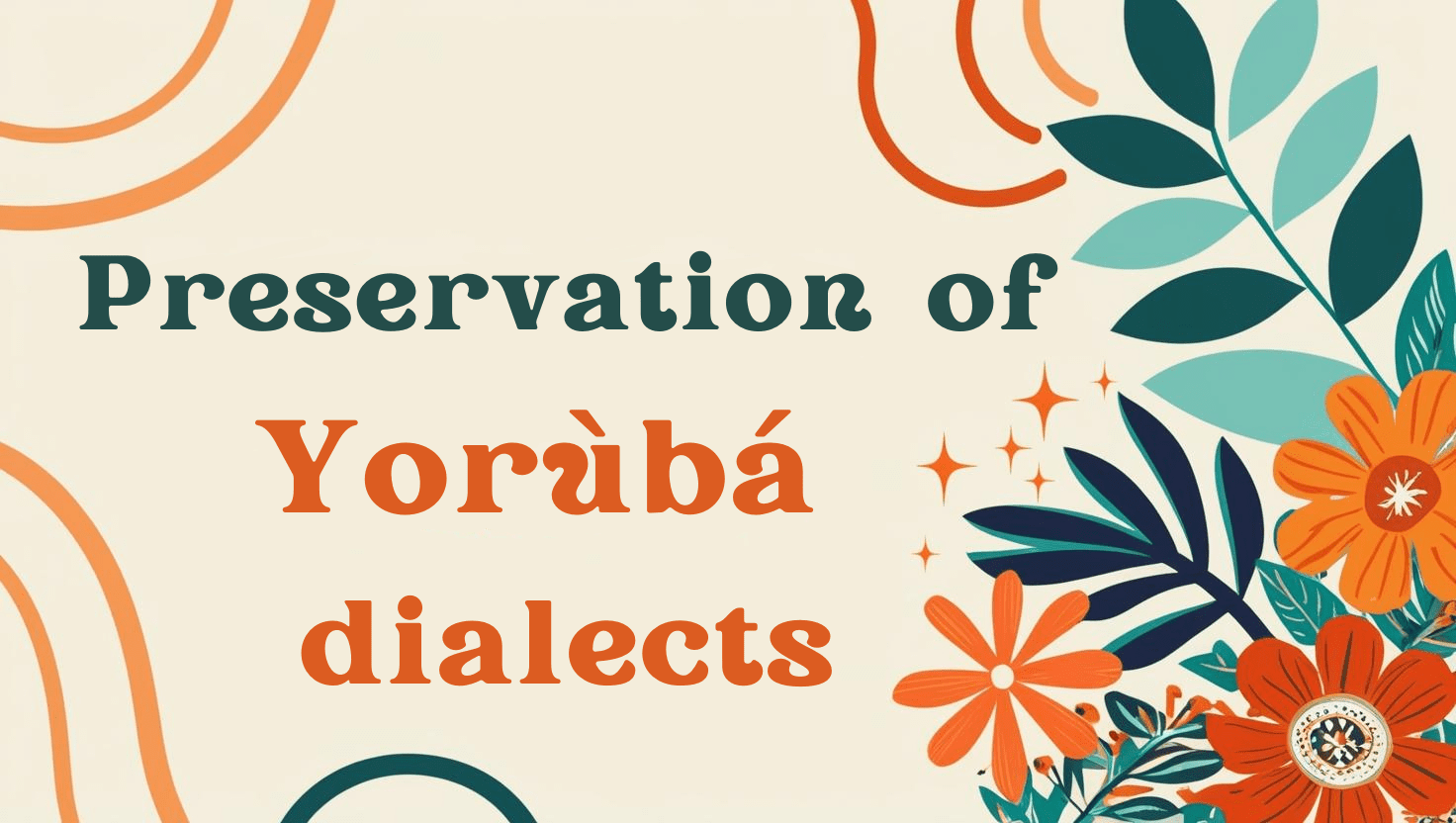
Keeping Yorùbá Dialects Alive
- Teach the language: Teach children to speak their local dialects at home to ensure they stay connected to their cultural identity.
- Document the language: Record native speakers, write down the grammar and vocabulary, and create dictionaries.
- Record and document stories, songs, and proverbs in different dialects.
- Use music: Yoruba songs play a crucial role in preserving dialects.
- Use Nollywood: Nollywood’s production of historical classics in the Nigerian Yorùbá language helps preserve the language and its culture.
- Use the language: Promote the use of the language in everyday life.
- Use social media: Use social media to promote the language.
- Celebrate and respect the diversity of Yorùbá language and culture.
Fun Facts About Yorùbá Dialects
- Each dialect has its own special proverbs and expressions
- Some dialects are more conservative, keeping older forms of words
- Others are more innovative, creating new expressions
- Market dialects often have special trading vocabulary
- Coastal dialects have lots of fishing and maritime terms
Conclusion
Yorùbá is a widely spoken language. However, it is largely endangered and faces the threat of extinction, as highlighted by journals of African Studies and research on African linguistics. Documenting and learning these dialects can contribute to their preservation.
The Yorùbá language is more than just words; it is a treasure of culture and history. By exploring and preserving Yorùbá dialects, we keep our heritage alive for future generations.
We would love to hear your thoughts on this post. Let us know if you enjoyed it and would love to see more like this. Which dialect do you use?
References
- Adebayo, A. (2023). “Contemporary Yorùbá Language Usage.” Journal of Nigerian Languages.
- Adéníyì, H. (2021). The Phonology of Yorùbá Dialects: Contrast and Comparison. Journal of West African Languages, 48(1), 65-89.
- Ethnologue. (2024). “Languages of the World: Yoruba.”
- Fagborun, J. G. (2019). Yorùbá Grammar and the Language Teacher. Oxford University Press.
- Fagborun, J. G. (2022). “Yoruba Dialects in West Africa.”
- Lewis, M. P. (Ed.). (2024). Ethnologue: Languages of the World (27th ed.). SIL International.
- Moseley, C. (Ed.). (2023). Atlas of the World’s Languages in Danger. UNESCO Publishing.
- Ọlátẹ́jú, A. (2022). A Synchronic Study of Yorùbá Dialectology. Studies in African Linguistics, 51(2), 178-196.
- Oyètádé, S. O. (2020). The Sociolinguistics of Yorùbá. Cambridge University Press.
- UNESCO Ad Hoc Expert Group on Endangered Languages. (2023). Language Vitality and Endangerment Framework.
- Williamson, K., & Blench, R. (2021). Niger-Congo Languages: Classification and Description. In The Languages of West Africa (pp. 123-159). Routledge.
- Yoruba Language Academy Database. (2024).

